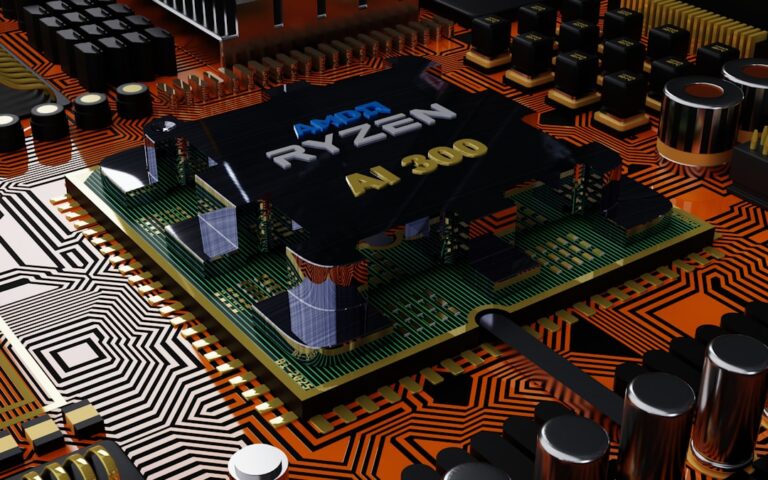Introduction to the Technology Life Cycle
The technology life cycle (TLC) is a critical framework used to understand the progression and maturation of technologies over time. It encompasses several distinct stages, each representing a phase in the development, adoption, and eventual decline of a technological innovation. The significance of the technology life cycle lies in its ability to inform technology management and innovation strategies across various industries. By understanding the TLC, organizations can better navigate the complexities of introducing new technologies, assess market readiness, and ensure optimal resource allocation.
This blog post aims to provide a comprehensive overview of the technology life cycle, focusing on the key stages involved: introduction, growth, maturity, and decline. Readers can expect to acquire insights into how businesses can identify where a particular technology resides within the cycle and make informed decisions accordingly. Furthermore, this post will explore the various factors that influence the progression through these stages, including market dynamics, consumer behavior, and technological advancements.
The Stages of the Technology Life Cycle
The technology life cycle is an essential framework that describes the evolution of technology from inception to obsolescence. It is commonly divided into five distinct stages: research and development, introduction, growth, maturity, and decline. Each of these stages plays a critical role in understanding how technologies are adopted and ultimately phased out.
The first stage, research and development (R&D), is often characterized by extensive experimentation and innovation. During this phase, companies invest significant resources to develop new technologies or enhance existing ones. The challenges faced here include high uncertainty and costs, but the potential opportunities for groundbreaking advancements are substantial. Successful innovations during this period can lay the foundation for future technologies.
The introduction stage follows R&D, where the newly developed technology is launched into the market. This phase could see limited market acceptance as early adopters start utilizing the technology. Companies must navigate challenges related to marketing, education, and resource allocation. However, this stage also presents opportunities to establish a foothold with early users who can help promote the technology through word-of-mouth.
As the technology reaches its peak, it enters the maturity stage, characterized by stabilization in market demand. Growth slows, and competition intensifies, often leading to price wars and profit erosion. Companies must innovate or diversify to maintain their market share. Finally, the decline stage signifies diminishing interest and sales. The technology may become obsolete, or newer alternatives may emerge. Throughout this cycle, understanding the unique characteristics of each stage is crucial for making informed decisions in technology management.
Factors Influencing the Technology Life Cycle
The technology life cycle (TLC) is a complex progression that is significantly influenced by various external and internal factors. Understanding these influences is essential for businesses seeking to navigate the ever-changing technological landscape. Key external factors include economic conditions, societal trends, regulatory frameworks, and competitive dynamics.
Economic conditions play a vital role in shaping the technology life cycle. For instance, during a recession, companies may curtail investment in new technologies, limiting the innovation phase. Conversely, a booming economy often fosters investment in research and development, allowing for greater advancements and the birth of revolutionary technologies. Monetary policies, inflation rates, and overall economic health directly impact financial allocations to technology, effectively guiding the lifecycle stages.
Additionally, societal trends cannot be ignored. Consumer preferences, cultural shifts, and demographic changes influence market demand for certain technologies. For example, the increasing emphasis on sustainability has led companies to innovate in green technologies, thus affecting their position in the technology life cycle. Societal values often dictate what innovations gain traction and which ultimately fade away, underscoring the significance of understanding consumer attitudes throughout the TLC.
Regulatory forces also impose considerable influence on the technology life cycle. Government policies and regulations shape the environment in which technologies are developed and deployed. Regulations can either accelerate or hinder technological adoption, prompting businesses to adapt their strategies accordingly. Moreover, competitive forces drive continuous innovation; companies must remain ahead of their peers to thrive. This competition forces businesses to evolve through each phase of the technology life cycle, ensuring they meet consumer demands and technological advancements simultaneously.
In essence, the interplay of economic, societal, regulatory, and competitive factors significantly impacts each stage of the technology life cycle, determining how technologies emerge, evolve, and eventually decline.
Case Studies: Successful Technology Life Cycles
Understanding the technology life cycle through real-world examples provides valuable insights into how organizations successfully navigate this complex process. One notable case is Apple and its iPhone product line. Since its introduction in 2007, the iPhone has undergone various technology life cycle phases, starting with the introduction stage characterized by innovative features such as the multi-touch screen. Apple employed strategic marketing and extensive user feedback to refine its product, rapidly moving to the growth stage, where it captured a significant market share. The key to Apple’s success has been its consistent innovation and development of new features, maintaining its competitive edge even as the market becomes saturated.
Another exemplary case is the firm Netflix, which transitioned from a DVD rental service to a leading streaming platform. During its initial phase, Netflix focused on enhancing user experience through its subscription model, which became the foundation of its growth phase. As competition intensified, Netflix pivoted to developing original content, effectively entering the maturity phase of the technology life cycle. By leveraging data analytics to understand viewer preferences, Netflix continues to innovate, ensuring its position at the forefront of the entertainment industry.
Furthermore, consider the evolution of Microsoft’s Windows operating system. Initially launched as Windows 1.0 in 1985, Microsoft has adeptly navigated the technology life cycle by addressing competitive pressures and adapting to user needs. The company has consistently integrated feedback, which led to the successful Windows 10 launch in 2015, marking a new maturity phase rich with features aimed at both enterprise and personal users. These experiences reflect the importance of agility and ongoing innovation within each phase of the technology life cycle.
These case studies illustrate that organizations that understand and strategically maneuver through the technology life cycle can achieve sustained success and growth. By analyzing the approaches taken by industry leaders, future technology development efforts can be informed by these valuable lessons.
Challenges in Managing the Technology Life Cycle
Managing the technology life cycle presents numerous challenges that can significantly impact an organization’s operational efficacy and strategic planning. One of the primary difficulties is budgeting effectively for different phases of the technology life cycle. Companies often struggle to allocate sufficient financial resources at the right time, leading to the underfunding of critical stages such as development or implementation. This misallocation can result in project delays, reduced quality, and ultimately, failure to meet market expectations.
Resource allocation is another significant challenge. Businesses frequently face constraints related to skilled labor, technology infrastructure, and time. When insufficient resources are assigned to a project, it can hinder the advancement through the life cycle, resulting in the technology not reaching its potential utility. Moreover, finding the right talent adept in emerging technologies is increasingly difficult, creating a bottleneck in progress.
Adaptability to market changes is also crucial as it directly influences the success of the technology life cycle. As industries evolve, technologies that were once cutting-edge may quickly become obsolete. Organizations must remain vigilant and responsive to emerging trends and competitor strategies. This dynamic environment can lead to difficult decisions regarding whether to pivot or continue investing in outdated technologies. Furthermore, organizations face risks related to technological obsolescence; making premature decisions can result in significant sunk costs.
Finally, organizations often encounter internal resistance to change when implementing new technologies. Employees may be hesitant to adopt new systems or processes, fearing disruption to their established workflows. This resistance can slow down the entire technology life cycle, preventing the organization from harnessing the full benefits of innovation. Addressing these challenges requires strategic foresight, planning, and a proactive approach to resource management and market dynamics.
The Role of Innovation in the Technology Life Cycle
Innovation is intrinsic to the technology life cycle, playing a pivotal role in how new technologies are developed, adopted, and eventually replaced. It serves as the driving force that propels each stage of the technology life cycle, from initial conception to eventual obsolescence. For companies operating in a rapidly evolving tech landscape, the integration of ongoing research and development (R&D) is essential for sustaining competitive advantage. Without a robust focus on innovation, organizations risk stagnation and may fall behind more agile competitors.
Ongoing R&D cultivates an environment where creativity can thrive, allowing companies to not only respond to consumer needs but also anticipate future demands. This proactive approach is critical as it helps organizations remain relevant in an era marked by swift technological advancements. Products and services that incorporate the latest innovations often enjoy a significant market advantage, highlighting the importance of continual investment in R&D initiatives.
Moreover, fostering a culture of innovation within an organization encourages collaboration and interdisciplinary work, which can lead to breakthrough technologies. Employees are empowered when creativity is actively encouraged, often resulting in new solutions that can redefine a company’s offerings. Leadership must prioritize creating an innovative culture by providing resources, rewards, and recognition for innovative efforts. This strategic focus ensures that innovation becomes part of the company ethos rather than merely an isolated activity.
Ultimately, the success of a technology-driven organization correlates directly with its ability to innovate consistently and effectively. As technological trends shift, businesses must adapt and refresh their strategies, driven by a strong foundation of research, creativity, and design thinking. Companies that cultivate innovation through intentional R&D initiatives will find themselves at the forefront of the technology life cycle, capable of not only surviving but thriving in an increasingly competitive marketplace.
Emerging Technologies and the Future of the Technology Life Cycle
Emerging technologies are poised to significantly reshape the technology life cycle, introducing new dynamics that organizations must navigate. Technologies such as artificial intelligence (AI), blockchain, and the Internet of Things (IoT) have not only transformed existing processes but also generated entirely new paradigms. These advancements will undoubtedly influence how technology is developed, adopted, and phased out.
Artificial intelligence, for instance, is leading the way in automating tasks and enhancing decision-making, fundamentally altering the stages of technology development. Its capabilities allow organizations to harness vast amounts of data, enabling predictive analytics and personalized experiences. As organizations integrate AI into their operations, they must remain agile and open to continuous learning to fully leverage its potential. This adaptability is crucial in the technology life cycle, as the pace of AI advancements is rapid, requiring swift integration to maintain competitiveness.
Blockchain technology is another pivotal force, providing a decentralized approach that enhances transparency and security. Industries ranging from finance to supply chain management are increasingly adopting blockchain solutions, leading to the evolution of trust and data integrity practices. As organizations incorporate blockchain into their infrastructures, the traditional phases of technology deployment may be revisited, fostering an environment of innovation and collaboration across sectors.
The Internet of Things is also revolutionizing how we interact with devices, creating a networked environment where smart devices collect and share data. This interconnectedness is reshaping the customer experience and operational efficiency, influencing the technology life cycle by introducing new factors such as real-time data processing and remote management. Organizations must prepare for the implications of IoT, understanding that its integration will necessitate a reevaluation of existing strategies and metrics.
As we look toward the future, organizations will need to remain proactive in adapting to these emerging technologies. Fostering a culture of innovation, investing in continuous education, and embracing the potential of AI, blockchain, and IoT will facilitate a smoother transition through the evolving technology life cycle.
Strategies for Companies to Navigate the Technology Life Cycle
Navigating the technology life cycle requires strategic foresight and adaptability from organizations seeking to maintain their competitive edge. One of the fundamental strategies involves thorough market research. Understanding market trends, consumer preferences, and emerging technologies is crucial for identifying the right moments to innovate or manage a product. By utilizing various research methodologies, companies can gather valuable insights that inform their decisions throughout the technology life cycle.
Another essential strategy is the adoption of agile development practices. In an environment characterized by rapid technological advancements, organizations must be able to respond promptly to changes. Agile methodologies facilitate iterative development, allowing teams to adjust features and improvements based on user feedback and market conditions. This flexibility not only enhances product quality but also fosters closer alignment with consumer needs, ultimately supporting a smoother transition through different phases of the technology life cycle.
Furthermore, strategic marketing plays a pivotal role in effectively guiding products through the technology life cycle. Developing tailored marketing strategies that resonate with target audiences can significantly enhance a product’s visibility and adoption rate. This includes positioning the product appropriately at different stages—highlighting its innovative features during its introduction phase, focusing on its benefits during growth, and employing tactics such as revitalization or rebranding during maturity or decline. Integrated marketing communications that maintain a consistent message across multiple channels can bolster brand awareness and customer engagement, ensuring that the product remains relevant throughout its life cycle.
By implementing these strategies—robust market research, agile methodologies, and strategic marketing—organizations can adeptly navigate the intricacies of the technology life cycle, optimizing their products’ potential and longevity in the market.
Conclusion: Embracing the Technology Life Cycle
Understanding the technology life cycle (TLC) is essential for businesses and innovators navigating the fast-paced landscape of today’s economy. The technology life cycle encompasses several stages, from the initial inception and development of new technologies to their maturity and eventual decline. Each stage presents unique challenges and opportunities that require careful consideration and strategic planning.
Throughout the blog post, we examined the various aspects of the technology life cycle, including the importance of identifying emerging technologies, the role of market research in assessing potential demand, and the necessity of continual adaptation as technology evolves. It is crucial for organizations to recognize that each phase in the life cycle can significantly influence their competitive positioning and overall success in the marketplace.
By understanding the nuances of the technology life cycle, businesses can make informed decisions regarding resource allocation, product development, and market entry strategies. This knowledge serves as a foundation for fostering innovation and staying ahead of competitors in an increasingly saturated industry. Moreover, grasping the implications of each stage allows organizations to leverage emerging trends effectively, ensuring they remain relevant in a constantly changing environment.
As we conclude this exploration of the technology life cycle, it is imperative for readers to contemplate how they might apply these insights to their own contexts. Whether you are a seasoned entrepreneur, an innovator, or a business leader, embracing the technology life cycle will empower you to navigate challenges and seize opportunities effectively. By incorporating this framework into your strategic planning, you can enhance your organization’s adaptability and foster sustainable growth in a technology-driven world.





















+ There are no comments
Add yours